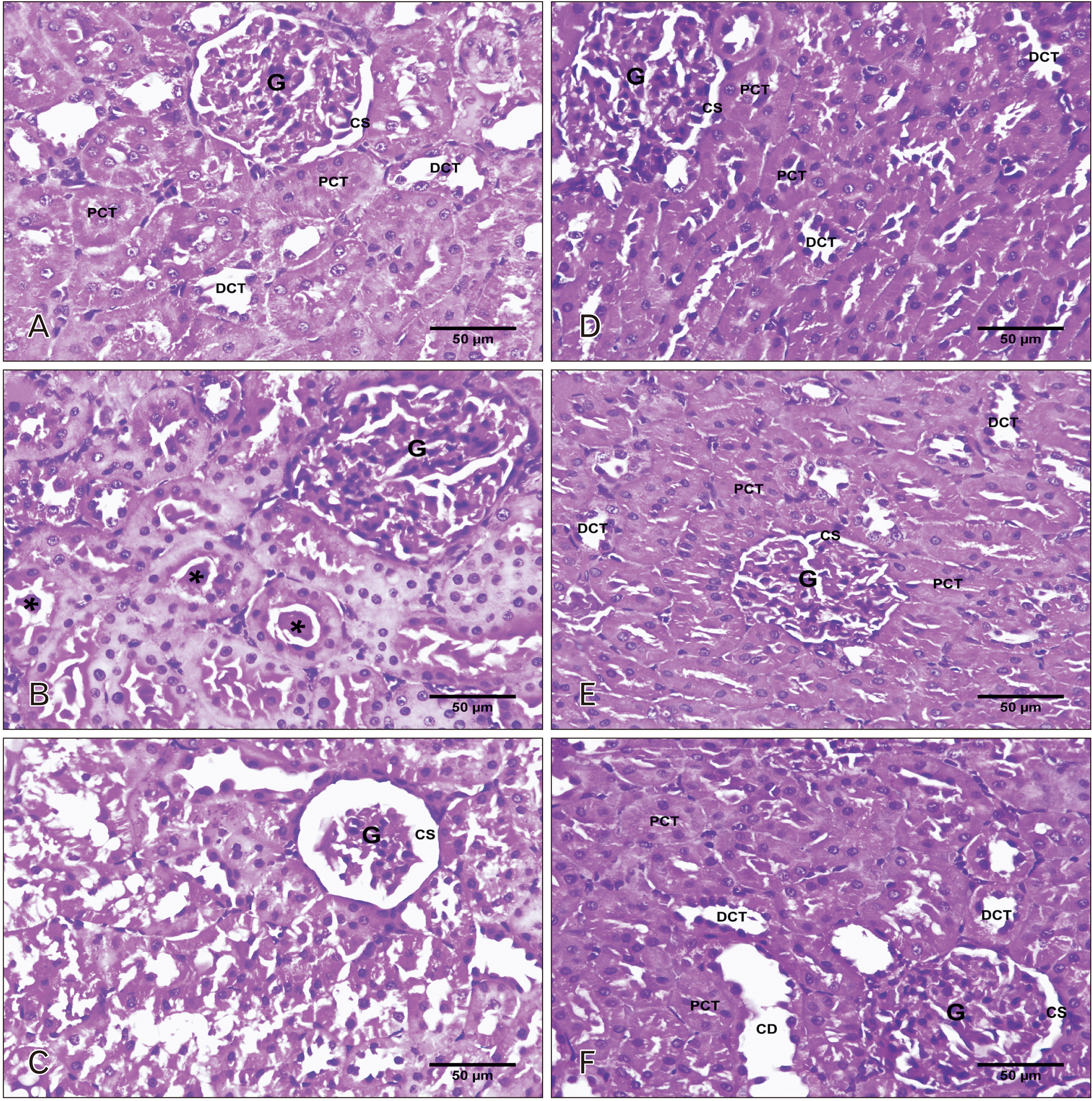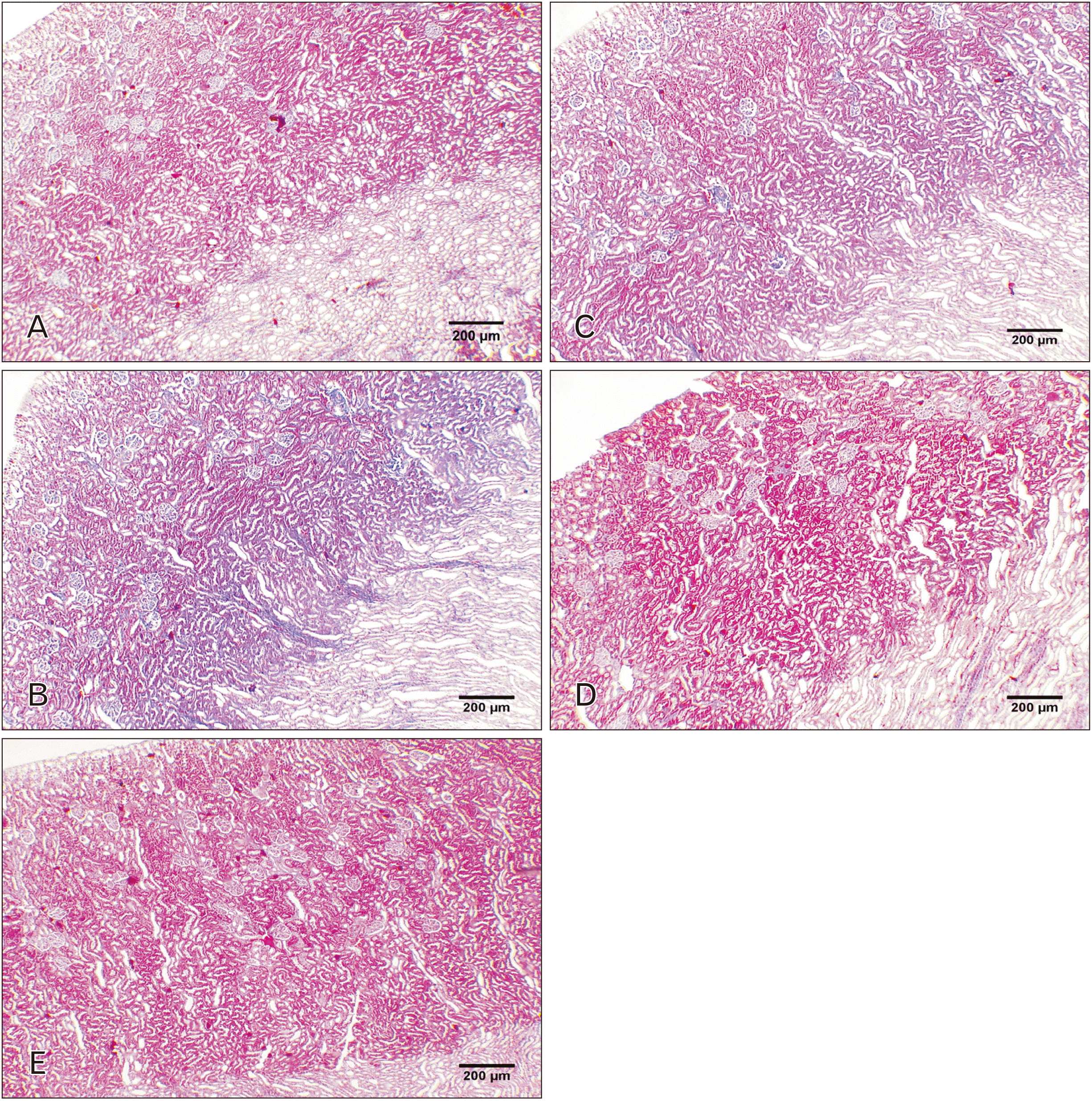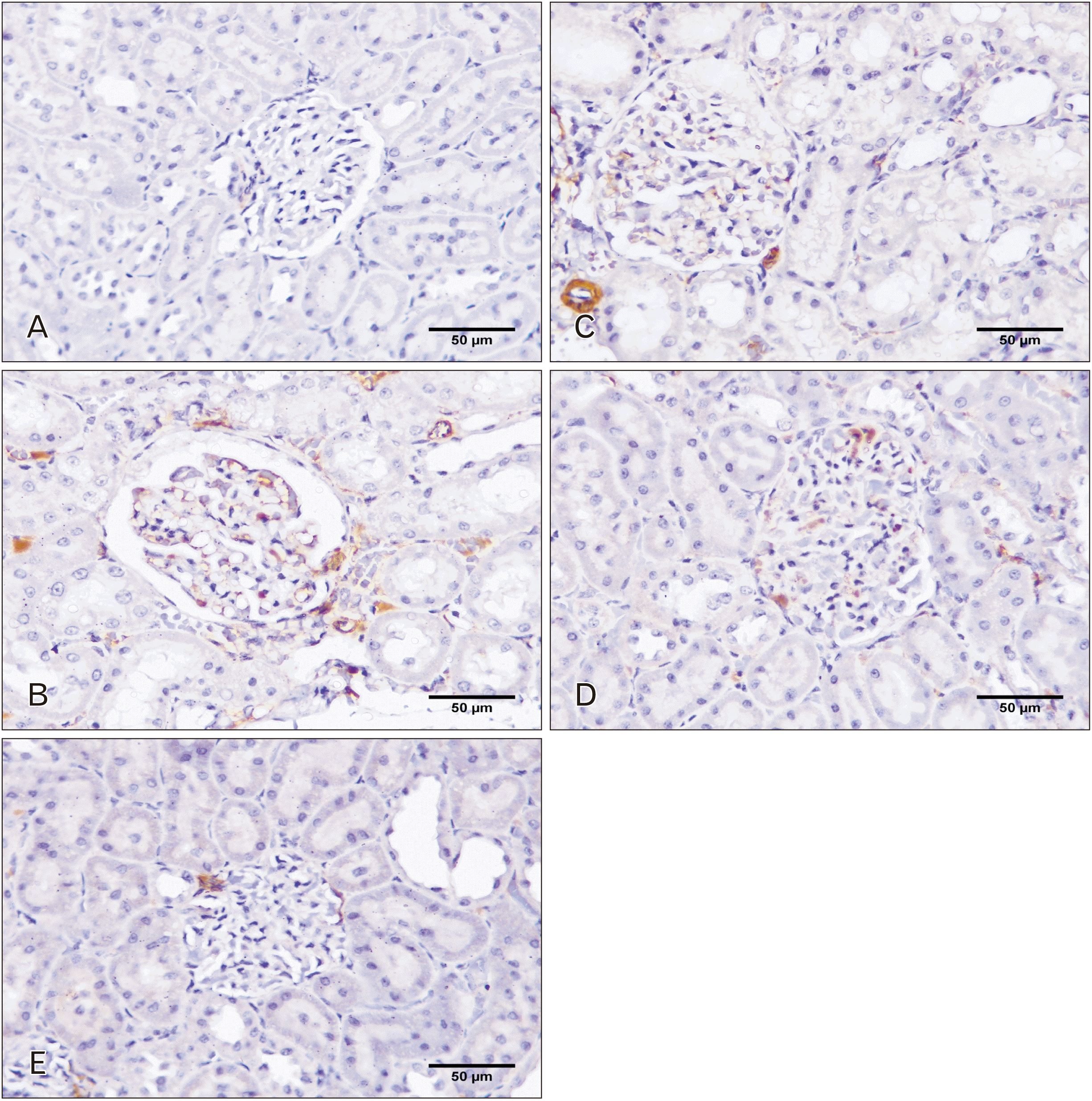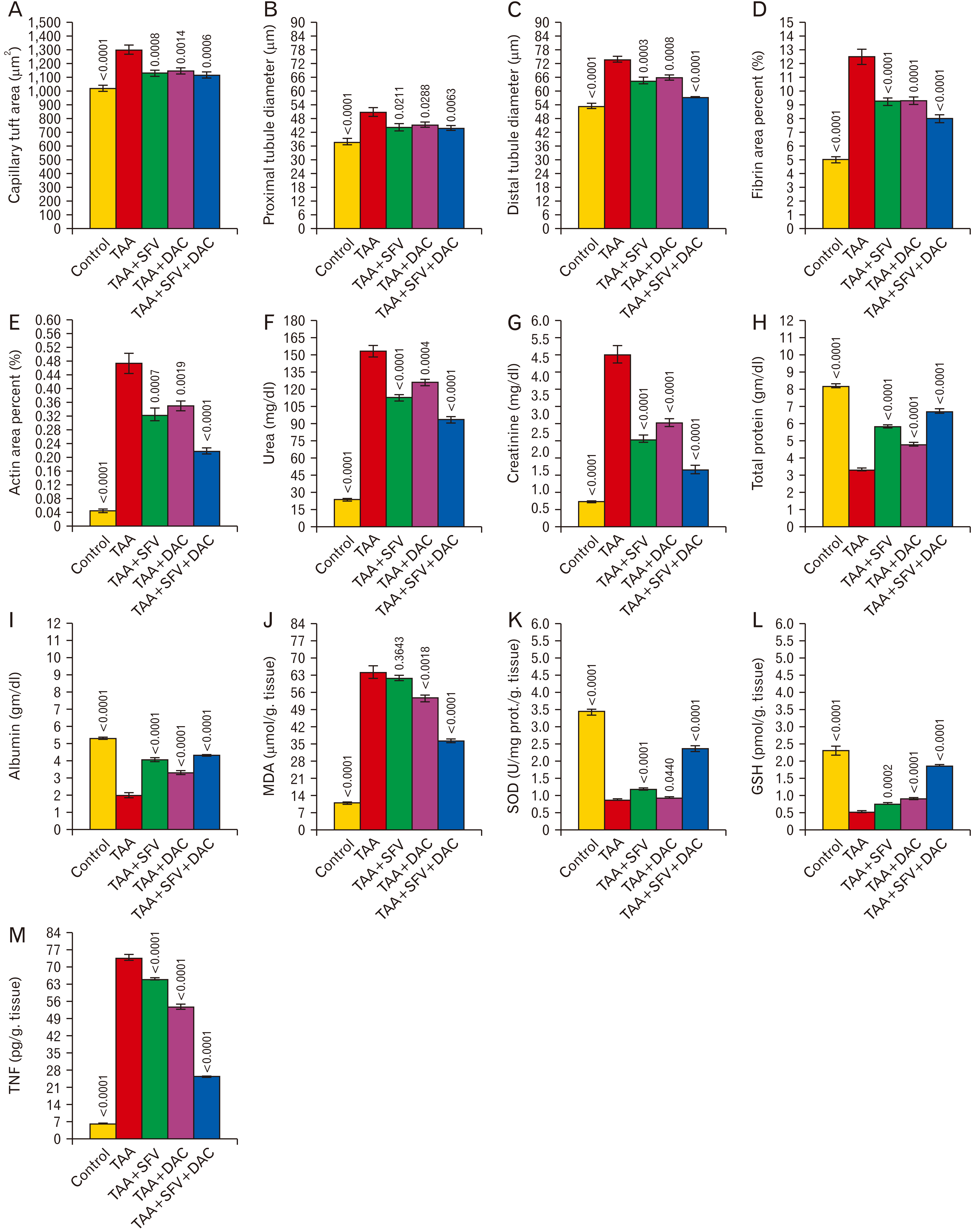2. Zargar S, Alonazi M, Rizwana H, Wani TA. 2019; Resveratrol reverses thioacetamide-induced renal assault with respect to oxidative stress, renal function, DNA damage, and cytokine release in Wistar rats. Oxid Med Cell Longev. 2019:1702959. DOI:
10.1155/2019/1702959. PMID:
31583036. PMCID:
PMC6754927.

3. Ghosh S, Sarkar A, Bhattacharyya S, Sil PC. 2016; Silymarin protects mouse liver and kidney from thioacetamide induced toxicity by scavenging reactive oxygen species and activating PI3K-Akt pathway. Front Pharmacol. 7:481. DOI:
10.3389/fphar.2016.00481. PMID:
28018219. PMCID:
PMC5156955.

4. Kadir FA, Othman F, Abdulla MA, Hussan F, Hassandarvish P. 2011; Effect of Tinospora crispa on thioacetamide-induced liver cirrhosis in rats. Indian J Pharmacol. 43:64–8. DOI:
10.4103/0253-7613.75673. PMID:
21455425. PMCID:
PMC3062125.

5. Vokálová L, Lauková L, Čonka J, Melišková V, Borbélyová V, Bábíčková J, Tóthová L, Hodosy J, Vlková B, Celec P. 2017; Deoxyribonuclease partially ameliorates thioacetamide-induced hepatorenal injury. Am J Physiol Gastrointest Liver Physiol. 312:G457–63. DOI:
10.1152/ajpgi.00446.2016. PMID:
28209603.

6. Al-Attar AM, Alrobai AA, Almalki DA. 2017; Protective effect of olive and juniper leaves extracts on nephrotoxicity induced by thioacetamide in male mice. Saudi J Biol Sci. 24:15–22. DOI:
10.1016/j.sjbs.2015.08.013. PMID:
28053566. PMCID:
PMC5198929.

7. Hajovsky H, Hu G, Koen Y, Sarma D, Cui W, Moore DS, Staudinger JL, Hanzlik RP. 2012; Metabolism and toxicity of thioacetamide and thioacetamide S-oxide in rat hepatocytes. Chem Res Toxicol. 25:1955–63. DOI:
10.1021/tx3002719. PMID:
22867114. PMCID:
PMC3444651.
9. Schyman P, Printz RL, Estes SK, Boyd KL, Shiota M, Wallqvist A. 2018; Identification of the toxicity pathways associated with thioacetamide-induced injuries in rat liver and kidney. Front Pharmacol. 9:1272. DOI:
10.3389/fphar.2018.01272. PMID:
30459623. PMCID:
PMC6232954.

10. Mansour RSAE, Ezzat SF, Abou-Bakr DA. 2020; Ameliorative effect of propolis against thioacetamide induced hepatorenal injury in adult male rats. Kidney injury molecule-1 (KIM-1) a biomarker of renal injury. Med J Cairo Univ. 88:243–58. DOI:
10.21608/mjcu.2020.93984.

11. Lam HYP, Hung MY, Liang TR, Peng SY. 2021; An
in-vivo study into the effects of schisandrin B in the liver, spleen, kidney, and brain of acute thioacetamide-intoxicated mice. Iran J Pharm Res. 20:300–14. DOI:
10.22037/ijpr.2021.115154.15225. PMID:
35194448. PMCID:
PMC8842593.
12. Türkmen NB, Yüce H, Taşlıdere A, Şahin Y, Çiftçi O. 2022; The ameliorate effects of nerolidol on thioacetamide-induced oxidative damage in heart and kidney tissue. Turk J Pharm Sci. 19:1–8. DOI:
10.4274/tjps.galenos.2021.30806. PMID:
35227035. PMCID:
PMC8892551.
13. Söderholm J, Millbourn C, Büsch K, Kövamees J, Schvarcz R, Lindahl K, Bruchfeld A. 2018; Higher risk of renal disease in chronic hepatitis C patients: antiviral therapy survival benefit in patients on hemodialysis. J Hepatol. 68:904–11. DOI:
10.1016/j.jhep.2017.12.003. PMID:
29233630.

14. Poustchi H, Majd Jabbari S, Merat S, Sharifi AH, Shayesteh AA, Shayesteh E, Minakari M, Fattahi MR, Moini M, Roozbeh F, Mansour-Ghanaei F, Afshar B, Mokhtare M, Amiriani T, Sofian M, Somi MH, Agah S, Maleki I, Latifnia M, Fattahi Abdizadeh M, Hormati A, Khoshnia M, Sohrabi M, Malekzadeh Z, Merat D, Malekzadeh R. 2020; The combination of sofosbuvir and daclatasvir is effective and safe in treating patients with hepatitis C and severe renal impairment. J Gastroenterol Hepatol. 35:1590–4. DOI:
10.1111/jgh.14994. PMID:
31994788.

15. Eletreby R, Elakel W, Said M, El Kassas M, Seif S, Elbaz T, El Raziky M, Abdel Rehim S, Zaky S, Fouad R, Gamal Eldeen H, Abdo M, Korany M, Yosry A, El Serafy M, El-Sayed MH, ElShazly Y, Waked I, Doss W, Esmat G. 2017; Real life Egyptian experience of efficacy and safety of Simeprevir/Sofosbuvir therapy in 6211 chronic HCV genotype IV infected patients. Liver Int. 37:534–41. DOI:
10.1111/liv.13266. PMID:
27712017.

16. Bullard-Feibelman KM, Govero J, Zhu Z, Salazar V, Veselinovic M, Diamond MS, Geiss BJ. 2017; The FDA-approved drug sofosbuvir inhibits Zika virus infection. Antiviral Res. 137:134–40. DOI:
10.1016/j.antiviral.2016.11.023. PMID:
27902933. PMCID:
PMC5182171.

18. Bunchorntavakul C, Reddy KR. 2015; Review article: the efficacy and safety of daclatasvir in the treatment of chronic hepatitis C virus infection. Aliment Pharmacol Ther. 42:258–72. DOI:
10.1111/apt.13264. PMID:
26014906.

19. Sulkowski MS, Gardiner DF, Rodriguez-Torres M, Reddy KR, Hassanein T, Jacobson I, Lawitz E, Lok AS, Hinestrosa F, Thuluvath PJ, Schwartz H, Nelson DR, Everson GT, Eley T, Wind-Rotolo M, Huang SP, Gao M, Hernandez D, McPhee F, Sherman D, Hindes R, Symonds W, Pasquinelli C, Grasela DM. 2014; Daclatasvir plus sofosbuvir for previously treated or untreated chronic HCV infection. N Engl J Med. 370:211–21. Erratum in: N Engl J Med 2014;370:1469. DOI:
10.1056/NEJMoa1306218. PMID:
24428467.

20. McCormack PL. 2015; Daclatasvir: a review of its use in adult patients with chronic hepatitis C virus infection. Drugs. 75:515–24. DOI:
10.1007/s40265-015-0362-5. PMID:
25721433.

21. Ahmed OA, Elsebaey MA, Fouad MHA, Elashry H, Elshafie AI, Elhadidy AA, Esheba NE, Elnaggar MH, Soliman S, Abd-Elsalam S. 2018; Outcomes and predictors of treatment response with sofosbuvir plus daclatasvir with or without ribavirin in Egyptian patients with genotype 4 hepatitis C virus infection. Infect Drug Resist. 11:441–5. DOI:
10.2147/IDR.S160593. PMID:
29628768. PMCID:
PMC5878661.

22. Yakoot M, El-Shabrawi MH, AbdElgawad MM, Mahfouz AA, Helmy S, Abdo AM, El-Khayat HR. 2018; Dual sofosbuvir/daclatasvir therapy in adolescent patients with chronic hepatitis C infection. J Pediatr Gastroenterol Nutr. 67:86–9. DOI:
10.1097/MPG.0000000000001968. PMID:
29570560.

23. Simmons B, Wentzel H, Mobarak S, Eslami G, Sadeghi A, Ali Asgari A, Abbaspour Kasgari H, Tirgar Fakheri H, Merat S, Hill A. 2021; Sofosbuvir/daclatasvir regimens for the treatment of COVID-19: an individual patient data meta-analysis. J Antimicrob Chemother. 76:286–91. Erratum in: J Antimicrob Chemother 2021;76:1653. DOI:
10.1093/jac/dkaa418. PMID:
33063117. PMCID:
PMC7665526.

24. Hamed M, El-Hasab M, Mansour FR. 2021; Direct acting anti-hepatitis C combinations as potential COVID-19 protease inhibitors. Virusdisease. 32:279–85. DOI:
10.1007/s13337-021-00691-6. PMID:
33948452. PMCID:
PMC8083918.

25. Zein AFMZ, Sulistiyana CS, Raffaello WM, Wibowo A, Pranata R. 2022; Sofosbuvir with daclatasvir and the outcomes of patients with COVID-19: a systematic review and meta-analysis with GRADE assessment. Postgrad Med J. 98:509–14. DOI:
10.1136/postgradmedj-2021-140287. PMID:
34103373. PMCID:
PMC8189832.

26. Rezk MM, Ali HA, Moustafa AH, Ali EM. 2018; Study the biochemical activities of anti-HCV drugs on thioacetamide induced hepatic fibrosis. J Pharm Appl Chem. 4:189–200. DOI:
10.18576/jpac/040305.

28. Shin JW, Seol IC, Son CG. 2010; Interpretation of animal dose and human equivalent dose for drug development. J Korean Orient Med. 31:1–7.
29. Bancroft JD, Gamble M. 2008. Theory and practice of histological techniques. 6th ed. Churchill Livingstone/Elsevier;Philadelphia:
30. Shalaby AM, Ibrahim MAAH, Aboregela AM. 2019; Effect of aspartame on the placenta of adult albino rat. A histological and immunohistochemical study. Ann Anat. 224:133–41. DOI:
10.1016/j.aanat.2019.04.007. PMID:
31108189.

31. Shalaby AM, Aboregela AM, Alabiad MA, El Shaer DF. 2020; Tramadol promotes oxidative stress, fibrosis, apoptosis, ultrastructural and biochemical alterations in the adrenal cortex of adult male rat with possible reversibility after withdrawal. Microsc Microanal. 26:509–23. DOI:
10.1017/S1431927620001397. PMID:
32366353.

33. Young DS, Bermes EW. Tietz NW, Burtis CA, Ashwood ER, editors. 1994. Specimen collection and processing: sources of biological variation. Tietz Textbook of Clinical Chemistry. 2nd ed. Saunders;Philadelphia: p. 58–102.
34. Ruot B, Breuillé D, Rambourdin F, Bayle G, Capitan P, Obled C. 2000; Synthesis rate of plasma albumin is a good indicator of liver albumin synthesis in sepsis. Am J Physiol Endocrinol Metab. 279:E244–51. DOI:
10.1152/ajpendo.2000.279.2.E244. PMID:
10913022.

35. Aboregela A, Ibrahim A, Raafat N, Sabbah N. 2020; Possible ameliorating role of ascorbic acid on intestinal changes induced by acrylamide in adult female albino rats and their offsprings. Egypt J Histol. 43:1115–27. DOI:
10.21608/ejh.2020.20059.1206.

36. Tawfeek SE, Domouky AM, Abdel-Kareem RH. 2021; Protective effect of vitamin C against ivermectin induced nephrotoxicity in different age groups of male wistar rats: bio-histopathological study. Anat Cell Biol. 54:501–17. DOI:
10.5115/acb.21.124. PMID:
34887362. PMCID:
PMC8693136.

37. Aziziaram Z, Bilal I, Zhong Y, Mahmod AK, Roshandel MR. 2021; Protective effects of curcumin against naproxen-induced mitochondrial dysfunction in rat kidney tissue. Cell Mol Biomed Rep. 1:23–32. DOI:
10.55705/cmbr.2021.138879.1001.

38. Raj D, Tomar B, Lahiri A, Mulay SR. 2020; The gut-liver-kidney axis: novel regulator of fatty liver associated chronic kidney disease. Pharmacol Res. 152:104617. DOI:
10.1016/j.phrs.2019.104617. PMID:
31881272.

39. Indolfi G, Hierro L, Dezsofi A, Jahnel J, Debray D, Hadzic N, Czubkowski P, Gupte G, Mozer-Glassberg Y, van der Woerd W, Smets F, Verkade HJ, Fischler B. 2018; Treatment of chronic hepatitis C virus infection in children: a position paper by the hepatology committee of European Society of Paediatric Gastroenterology, Hepatology and Nutrition. J Pediatr Gastroenterol Nutr. 66:505–15. DOI:
10.1097/MPG.0000000000001872. PMID:
29287014.

40. Marques PE, Oliveira AG, Pereira RV, David BA, Gomides LF, Saraiva AM, Pires DA, Novaes JT, Patricio DO, Cisalpino D, Menezes-Garcia Z, Leevy WM, Chapman SE, Mahecha G, Marques RE, Guabiraba R, Martins VP, Souza DG, Mansur DS, Teixeira MM, Leite MF, Menezes GB. 2015; Hepatic DNA deposition drives drug-induced liver injury and inflammation in mice. Hepatology. 61:348–60. DOI:
10.1002/hep.27216. PMID:
24824608.

42. Keshk WA, Zahran SM. 2019; Mechanistic role of cAMP and hepatocyte growth factor signaling in thioacetamide-induced nephrotoxicity: unraveling the role of platelet rich plasma. Biomed Pharmacother. 109:1078–84. DOI:
10.1016/j.biopha.2018.10.121. PMID:
30551358.

43. Bashandy SAE, El Awdan SA, Mohamed SM, Omara EAA. 2020;
Allium porrum and
Bauhinia Variegata mitigate acute liver failure and nephrotoxicity induced by thioacetamide in male rats. Indian J Clin Biochem. 35:147–57. DOI:
10.1007/s12291-018-0803-5. PMID:
32226246. PMCID:
PMC7093619.
44. Celik H, Camtosun A, Ciftci O, Cetin A, Aydın M, Gürbüz S. 2016; Beneficial effects of nerolidol on thioacetamide-induced damage of the reproductive system in male rats. Biomed Res. 27:725–30.
45. Wang ME, Chen YC, Chen IS, Hsieh SC, Chen SS, Chiu CH. 2012; Curcumin protects against thioacetamide-induced hepatic fibrosis by attenuating the inflammatory response and inducing apoptosis of damaged hepatocytes. J Nutr Biochem. 23:1352–66. DOI:
10.1016/j.jnutbio.2011.08.004. PMID:
22221674.

46. Kadir FA, Kassim NM, Abdulla MA, Yehye WA. 2013; Effect of oral administration of ethanolic extract of Vitex negundo on thioacetamide-induced nephrotoxicity in rats. BMC Complement Altern Med. 13:294. DOI:
10.1186/1472-6882-13-294. PMID:
24499255. PMCID:
PMC4028978.

47. Osman A, El-Hadary A, Korish AA, AlNafea HM, Alhakbany MA, Awad AA, Abdel-Hamid M. 2021; Angiotensin-I converting enzyme inhibition and antioxidant activity of papain-hydrolyzed camel whey protein and its hepato-renal protective effects in thioacetamide-induced toxicity. Foods. 10:468. DOI:
10.3390/foods10020468. PMID:
33672579. PMCID:
PMC7924048. PMID:
f22976afefb74434b729fe6bbd4ae889.

48. Saad HM, Oda SS, Sedeek EK. 2020; Protective effect of Lactéol® forte against thioacetamide-induced hepatic injury in male albino rats. Alex J Vet Sci. 67:92–8. DOI:
10.5455/ajvs.17323.

49. Childs K, Merritt E, Considine A, Sanchez-Fueyo A, Agarwal K, Martinez-Llordella M, Carey I. 2017; Immunological predictors of nonresponse to directly acting antiviral therapy in patients with chronic hepatitis C and decompensated cirrhosis. Open Forum Infect Dis. 4:ofx067. DOI:
10.1093/ofid/ofx067. PMID:
28584852. PMCID:
PMC5450903.

50. Pol S, Corouge M, Vallet-Pichard A. 2016; Daclatasvir-sofosbuvir combination therapy with or without ribavirin for hepatitis C virus infection: from the clinical trials to real life. Hepat Med. 8:21–6. DOI:
10.2147/HMER.S62014. PMID:
27019602. PMCID:
PMC4786064.








 PDF
PDF Citation
Citation Print
Print



 XML Download
XML Download